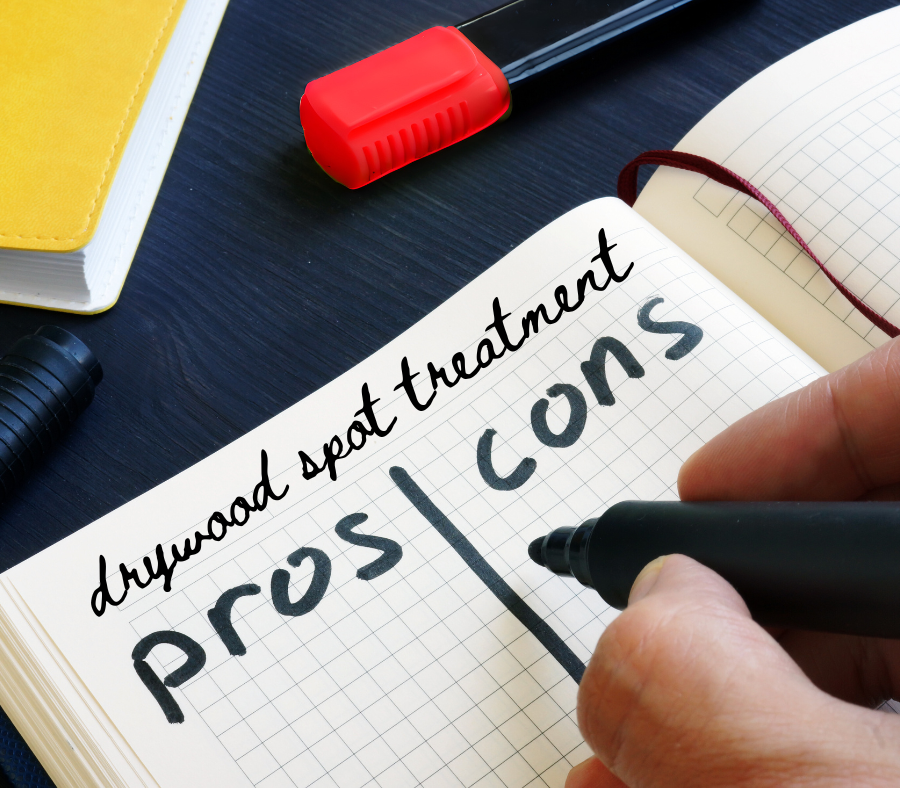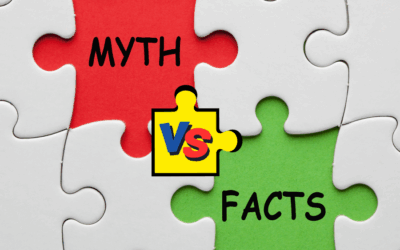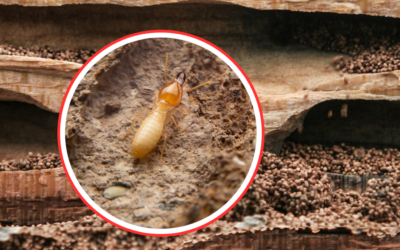Why Spot Treatments Often Fall Short
When dealing with drywood termites, you have two main options: whole-structure fumigation or spot treating the areas where you see signs of infestation. While spot treatment might seem like a simpler, cheaper solution, it often fails to fully resolve the problem.
Here’s why:
1. Hidden Colonies
Drywood termites live entirely inside wood, unlike subterranean termites that rely on soil contact. Because of this, the visible signs—like frass (termite droppings) or surface damage—are just the tip of the iceberg. Their colonies can spread into walls, furniture, or attic beams without obvious signs of infestation. Spot treatments only target what you can see, leaving hidden termites untouched.
2. Incomplete Eradication
Drywood termites don’t have a single central nest. Instead, they form multiple small colonies throughout a structure. If you only treat one area, you might eliminate some termites, but others will survive and continue to spread. Studies from experts, such as those at Texas A&M University, show that spot treatments frequently miss termites, allowing them to repopulate and cause further damage.
3. Increased Structural Damage
Over time, untreated termite infestations can weaken the wood in your home, compromising beams, floors, and structural supports. If you focus only on visible damage, you risk overlooking infestations that continue to spread. Many homeowners don’t realize the full extent of the damage until costly repairs are needed.
4. Wasted Time and Money
Spot treatments—like DIY sprays or localized injections—may seem cost-effective initially, but if they don’t fully eliminate the infestation, you’ll end up paying more for repeated treatments or a full fumigation later. Our Certified Inspectors often compare it to mopping the floor while leaving the windows open in a rainstorm—it just doesn’t work.
The Best Solution: Whole-Structure Fumigation
For complete termite elimination, whole-structure fumigation is the most effective option. This method uses gases like sulfuryl fluoride to penetrate deep into all wood surfaces, ensuring termites are eradicated throughout the entire home.
If you want a reliable, long-term solution, Coastal Fumigators is here to help. For a free inspection and expert fumigation services, contact us today.




